Unbelievably expensive abandoned mansions
Magnificent mansions left to languish
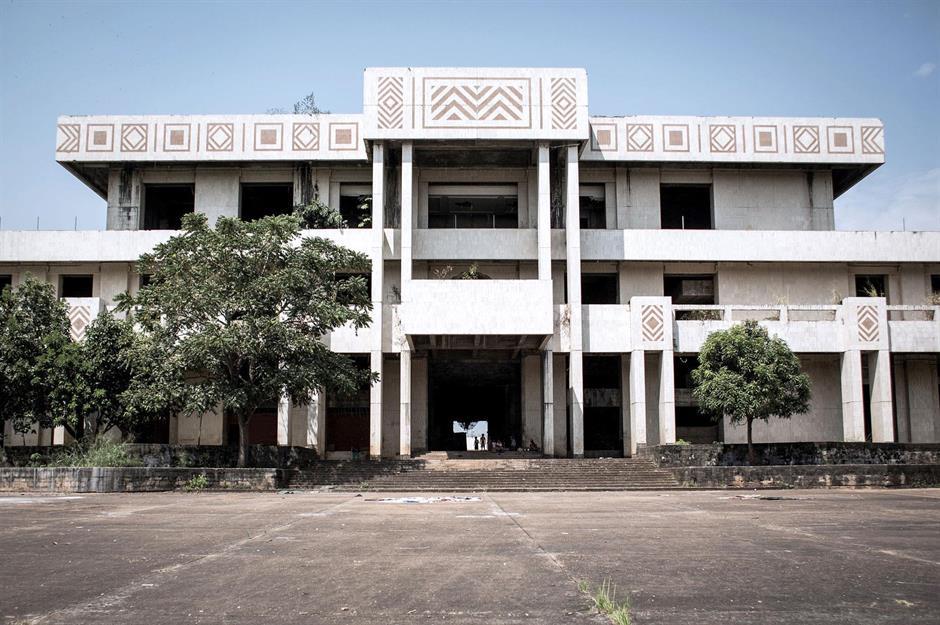
Some of the world's priciest properties have been forsaken by their owners and left to languish. Empty and unloved, these houses range from royal residences to presidential holiday homes and sprawling manor houses. But what led to their fall from grace?
Click or scroll on to go inside some of the most expensive derelict mansions in the world and uncover the mysteries behind their abandonment...
Wünsdorf officers' house, Brandenburg, Germany
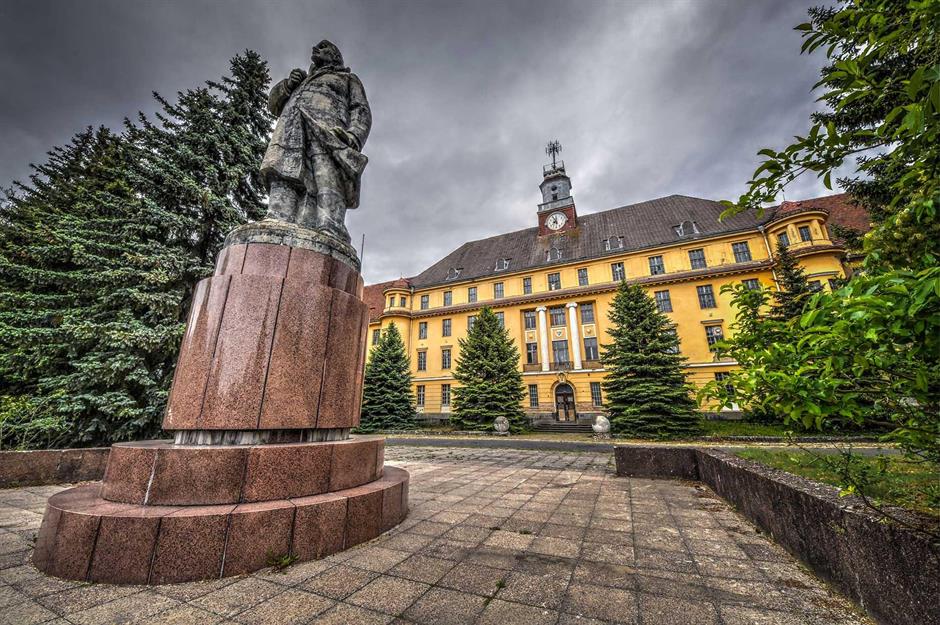
At its peak, as many as 75,000 Soviet men, women and children once called this vast abandoned property home. The sprawling officers' residence, and its vast 1,483-acre (600ha) estate, known as Wünsdorf, was a hub of Soviet military activity.
Established in 1871, Wünsdorf was one of Europe’s largest military bases at the time and witnessed dramatic changes over the decades. It started life as a POW camp in the First World War before Germany's Supreme Command moved in during the Second World War.
When the Cold War arrived, the Russians took over, and it was transformed into a Soviet stronghold.
Wünsdorf officers' house: a retreat for High Command
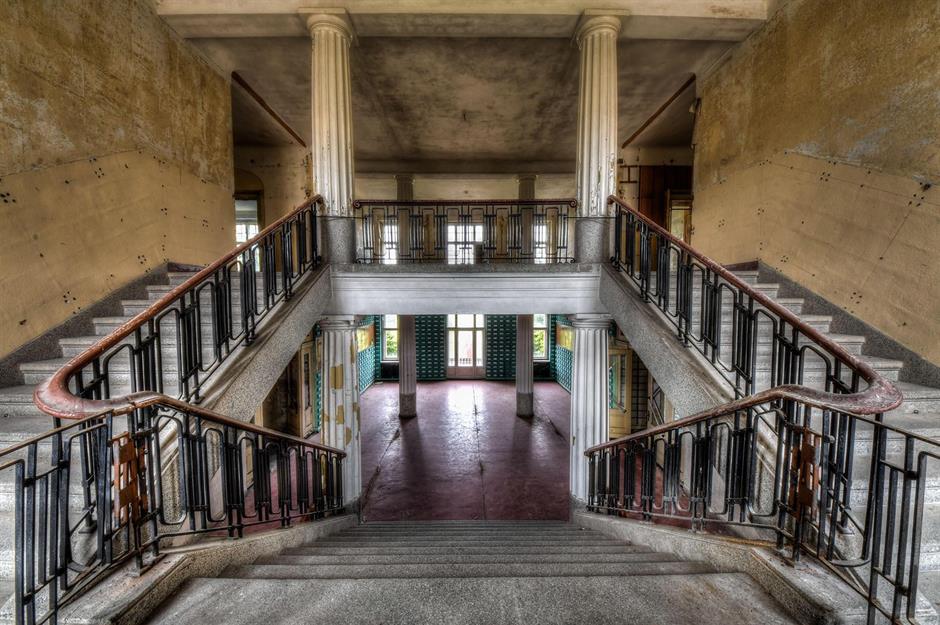
Even after years of neglect, it's not hard to imagine the grand hallways of the officers' house bustling with members of the Soviet High Command. The structure is still imposing today, though it's hard to overlook the decay that has set in over the years.
In its heyday, the estate was not just a military base but a vibrant community known as Little Moscow. The base held stores, a casino, schools, a theatre and recreational facilities. It was its own secretive, self-contained town.
Wünsdorf officers' house: the Forbidden City
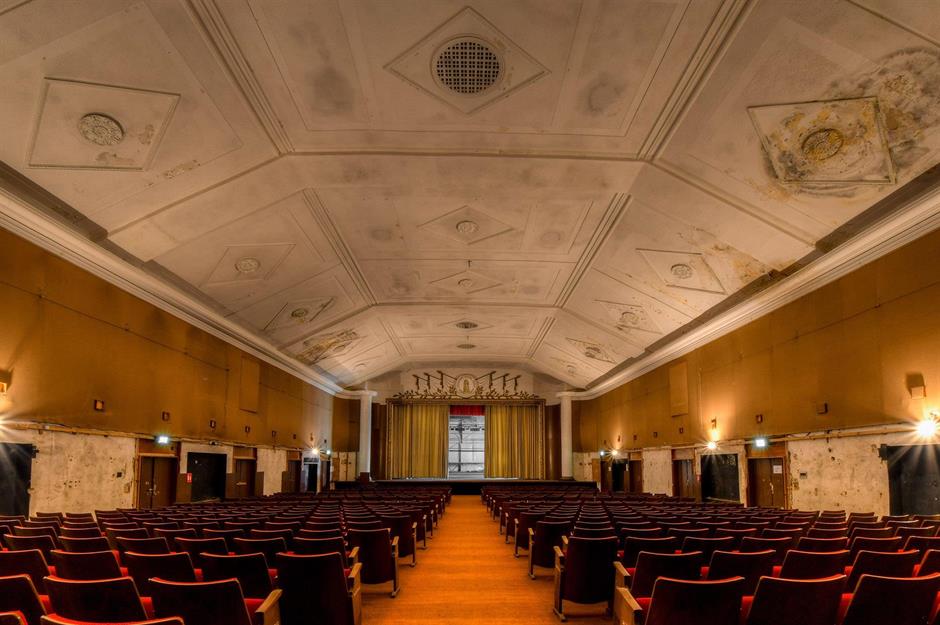
Here is the grand theatre with its ornate ceiling. The intricate architecture hints at the grandeur that once defined Wünsdorf. A calendar of cultural events was regularly hosted at the estate, including performances by Moscow's famous Bolshoi Ballet.
However, ordinary Germans rarely saw this side of the base, as entry to Wünsdorf was strictly controlled. The restricted access led to another nickname: the Forbidden City.
Wünsdorf officers' house: suddenly abandoned
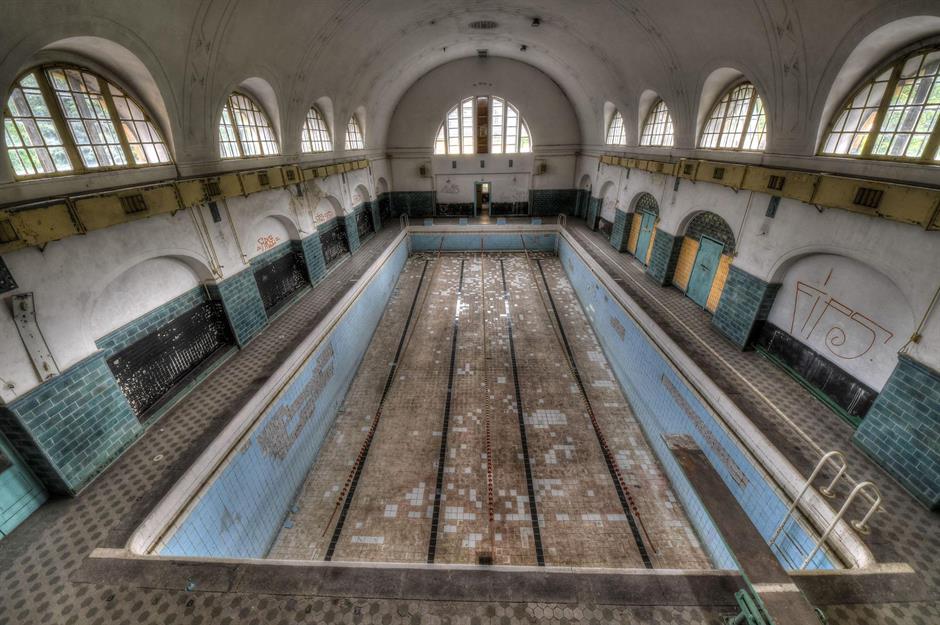
Pictured here is the estate's swimming pool, which is now a decaying shadow of its former self. Before the Soviets arrived, the site was used as an Olympic training camp for athletes headed to the 1936 games.
The Soviets left Wünsdorf in August 1994. 98,000 rounds of ammunition, mountains of rubbish, electronics and even pets were abandoned as Russian forces vacated their former stronghold.
Wünsdorf officers' house: intriguing bunker network

Following the Soviets' exit, the estate’s maintenance fell into the hands of a lone caretaker and it continued to deteriorate. The officer's house and a number of surrounding buildings were put up for sale in 2015 for £3 million ($4.1m). However, the structures still stand abandoned – perhaps buyers were put off by the property's chequered history.
Elsewhere, the surrounding acreage is peppered with a network of abandoned bunkers, remnants from the property's Second World War past. These intriguing structures are now open to the public alongside a museum, ensuring the site's history lives on.
Château des Rufflets, Normandy, France
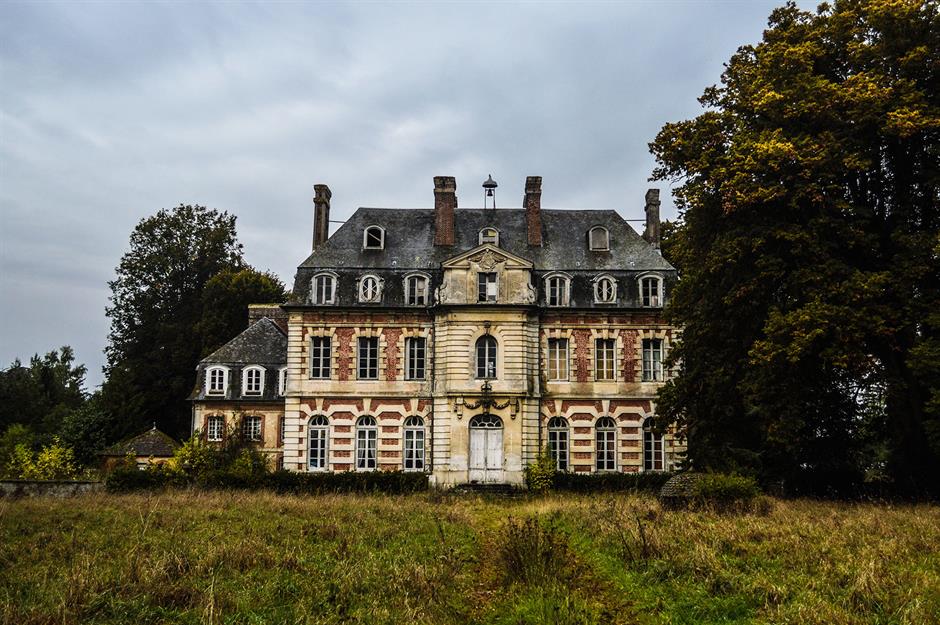
Nestled in the countryside of Normandy in the north of France, this magnificent mansion, known as Château des Rufflets, is shrouded in mystery. While little is known for certain about its history, pieces of information gleaned from records over the centuries paint an intriguing picture.
The years of abandonment certainly haven't dulled the home's impressive stature. Approaching the estate, the French Baroque exterior is still dazzling despite its dilapidation. The façade features ornate brickwork, a carved pediment and rows of arched windows.
Château des Rufflets: aristocratic retreat
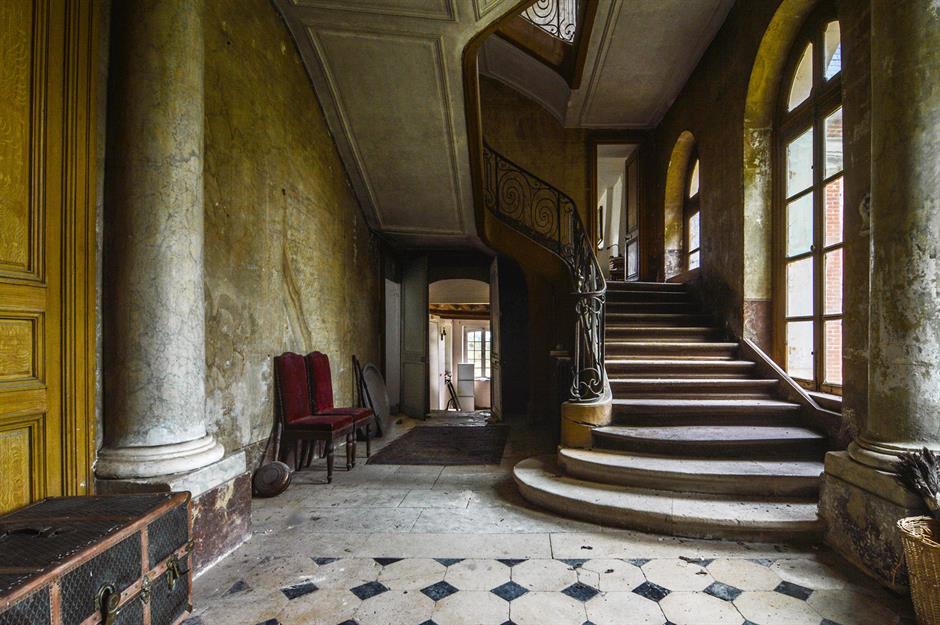
The main entry hall is spectacular, with its grand columns, sweeping staircase and black-and-white tiled floor. It's clear that whoever lived here was of significant social standing in this small community.
Rumours have long swirled about the regal home's past inhabitants. According to one urban explorer, the mansion was built in the 17th century by a local aristocrat who regularly attended the court of King Louis XIV at Versailles. There's no doubt that its construction would've cost its owner a significant sum four centuries ago.
Château des Rufflets: regal former resident
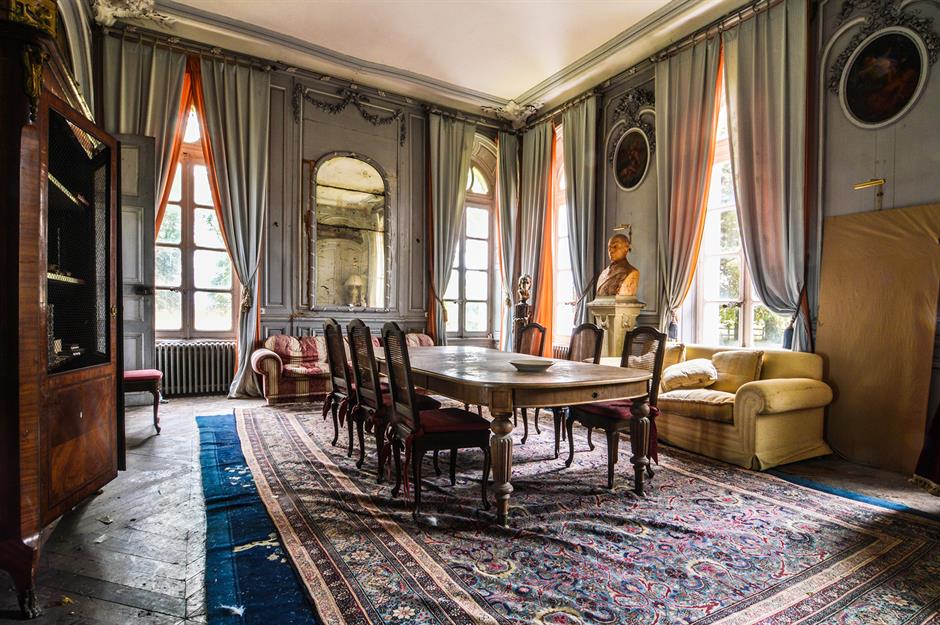
The palatial mansion is also known among urban explorers as Château des Bustes after the many statues and busts that adorn its halls, one of which can be seen here in the dining room. Photographed here back in 2016, the room wasn't much changed from its high-society heyday, with a gilded mirror, Persian rug and fine cabinetry still intact. Even the curtains are still hanging in place.
According to a historic census of the area taken between 1692 and 1790, the residence was occupied by a Monsieur Joseph-Laurent in 1777. A prominent member of the French aristocracy, he was a marquis and a knight of the Order of St Louis – a chivalric order established by King Louis XIV to honour his military officers.
Château des Rufflets: 1920 heyday
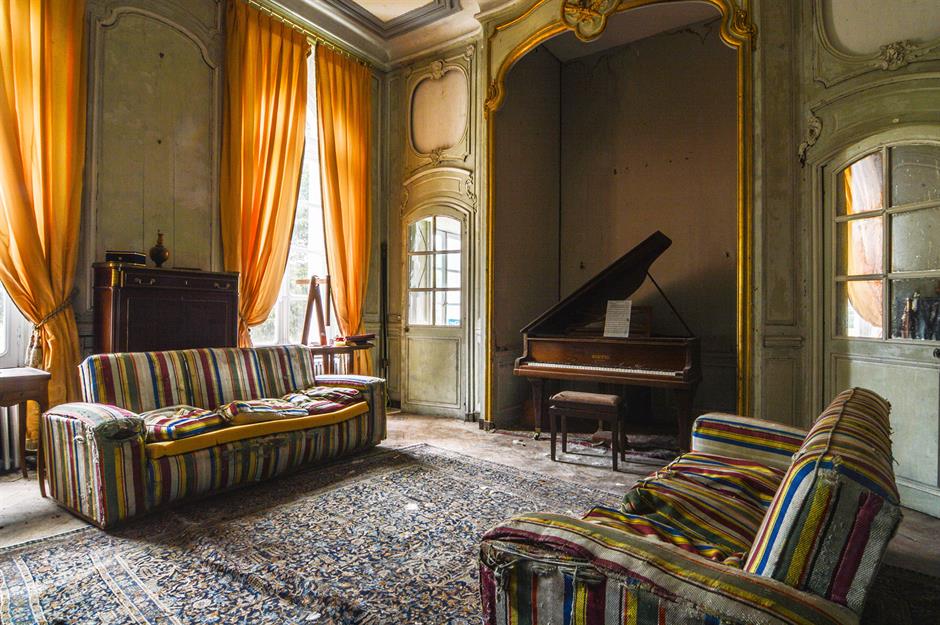
Fast-forward to the 1920s and the château was occupied by the Bouchon family. A bulletin from a union of local chemists and engineers recounts a visit to the mansion in 1929, where the gentlemen of the family hosted the group and put on a spread of "tasty local products: fruits, cream cheese, cider".
Perhaps the group retired to this beautiful sitting room, resplendent with its elaborate panelling, gilded alcove and grand piano.
Château des Rufflets: uncertain future
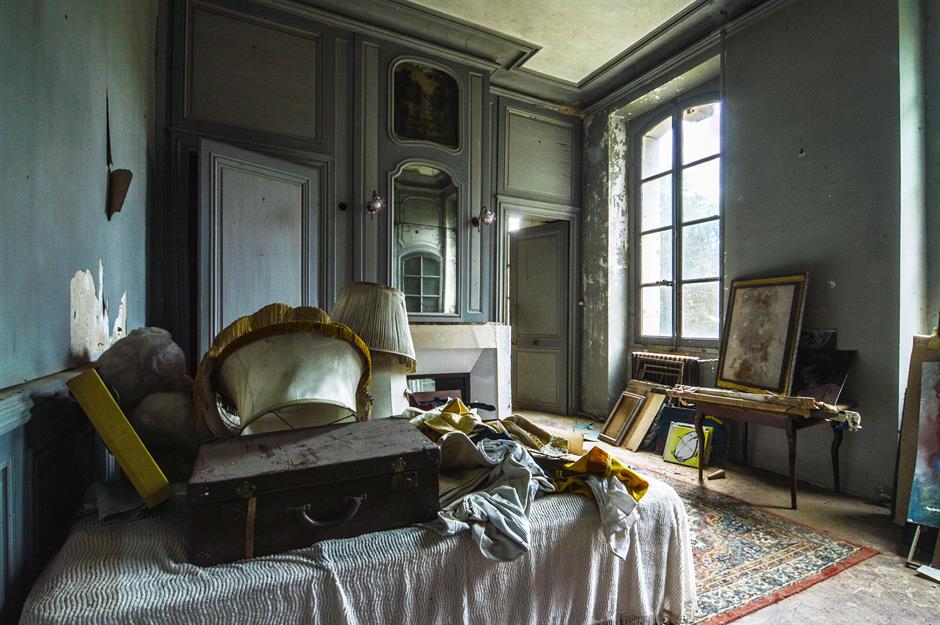
Upstairs, this elegant bedroom still has belongings left behind by the mansion's past residents. Canvases and artwork give an insight into the tastes of those who lived here, while what appears to be clothes lie discarded on the bed alongside a suitcase that was seemingly never packed.
Little is known about the fate of the château, but according to Google Earth images from February 2024, it's still standing. Whether it continues to languish under a layer of dust is anyone's guess – with any luck, someone has decided to renovate this architectural gem and return it to its former grandeur.
Hamilton Palace, Sussex, UK
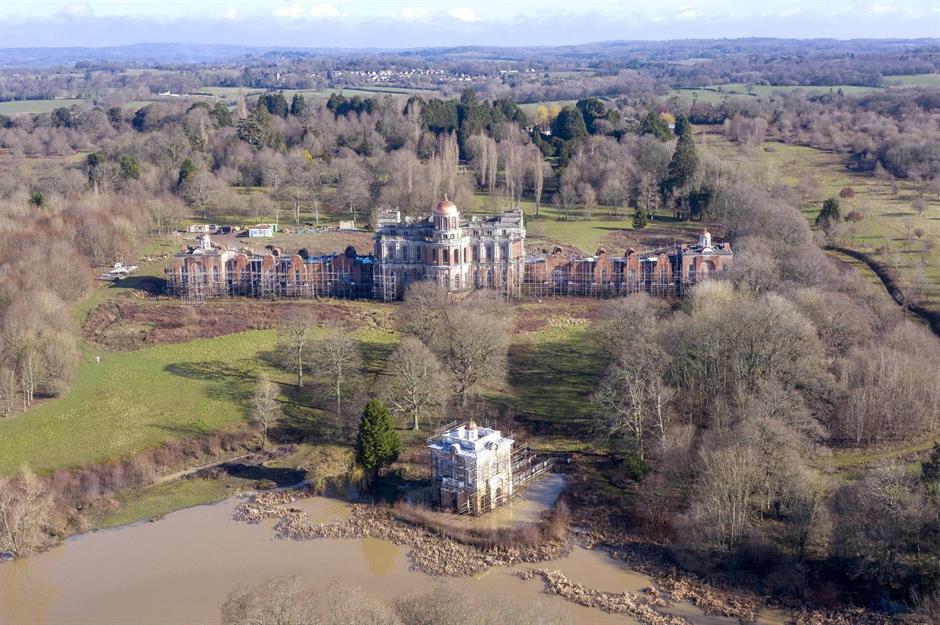
In the English town of Uckfield in Sussex lies Hamilton Palace, a spectacular private mansion. Or at least it was supposed to be when building work started four decades ago. Despite breaking ground in 1985, scaffolding remains in place – a stark reminder of the home's disastrous construction journey.
With two huge wings, a golden dome and a lakeside mausoleum, the palace is larger than Buckingham Palace. It was commissioned by disgraced businessman, Nicholas van Hoogstraten, who is said to have made his fortune in property, mines, art and money-lending.
Hamilton Palace: millionaire's folly
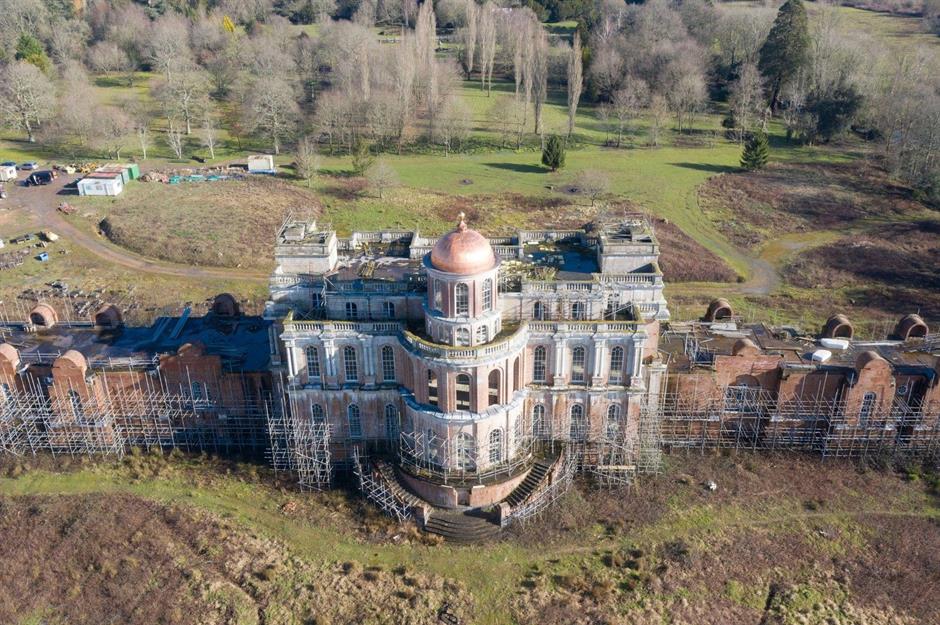
Van Hoogstraten became Britain’s youngest millionaire at the age of 22 in the 1960s and his net worth has been placed as high as £800 million ($1bn), according to Sussex Live.
Costing around £40 million ($54.2m) to build, a pricey £120 million ($163m) in today's money, Hamilton Palace was once one of the most expensive (and largest) private houses in Britain for a century, even though no one has ever lived there.
Hamilton Palace: planning conflicts
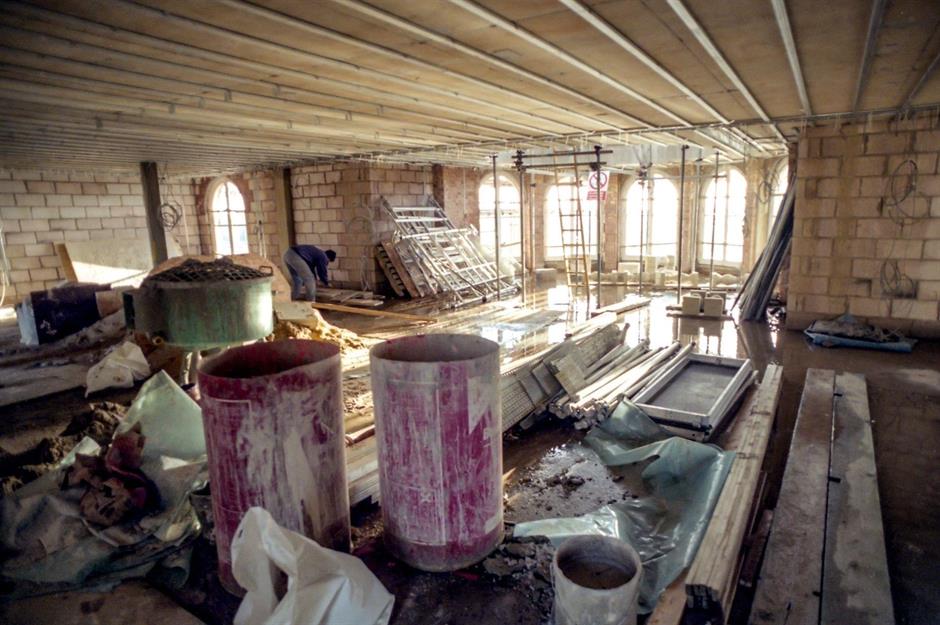
From the beginning, the construction of the palace didn't run smoothly. The project caused plenty of disputes with neighbours after van Hoogstraten decided to remove a public footpath that runs through the estate. Yet there are perhaps more sinister reasons why the house has remained half-finished, with construction materials strewn across its oversized rooms...
Hamilton Palace: construction halted
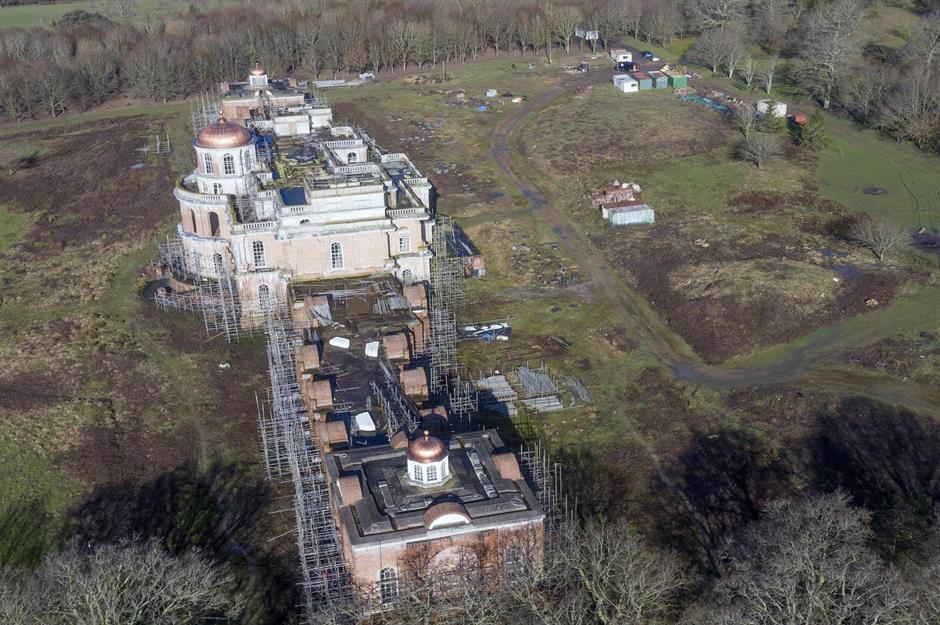
In a shocking turn of events, in 2002 Mr Hoogstraten was sentenced to 10 years in jail for the manslaughter of his business rival Mohammed Raja.
The conviction was later quashed on appeal, but van Hoogstraten was ordered to pay Raja’s family £6 million ($8.1m) in damages, of which van Hoogstraten said they “would not see a penny”, according to newspaper reports. Shortly after this, the construction of Hamilton Palace was put on hold.
Hamilton Palace: the ghost house of Sussex
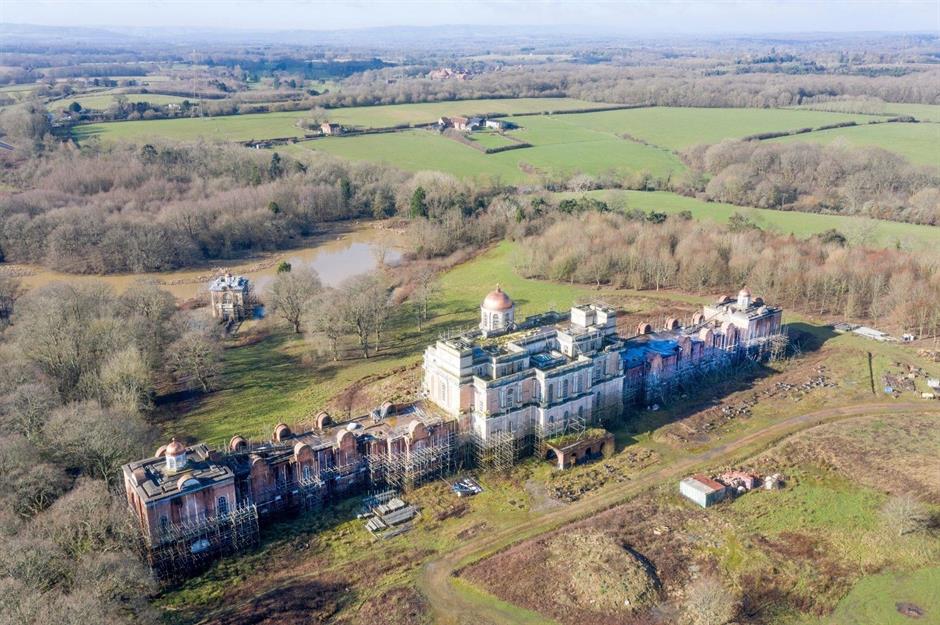
Since then, the dilapidated building, encased in scaffolding and standing in sharp contrast to the green and pleasant surrounding countryside, has remained pretty much unchanged.
Van Hoogstraten claims his empire has since been broken up and is now in the hands of his five children, as is his multi-million vanity project, which is known by locals as 'the ghost house of Sussex'.
18th-century townhouse, London, UK
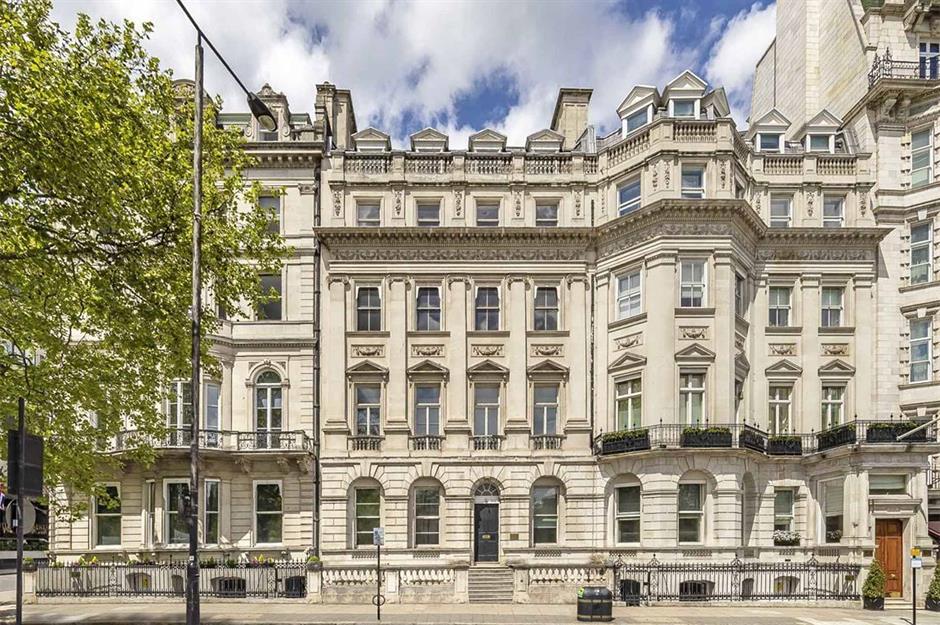
Completed in the mid-18th century, this spectacular townhouse can be found in the heart of one of London's most prestigious neighbourhoods, Mayfair.
Close to Hyde Park Corner, the Grade II-listed building would once have been the home of a very wealthy and socially important family, but somewhere along the lines the lavish residence was left to languish.
18th-century townhouse: dramatic architecture
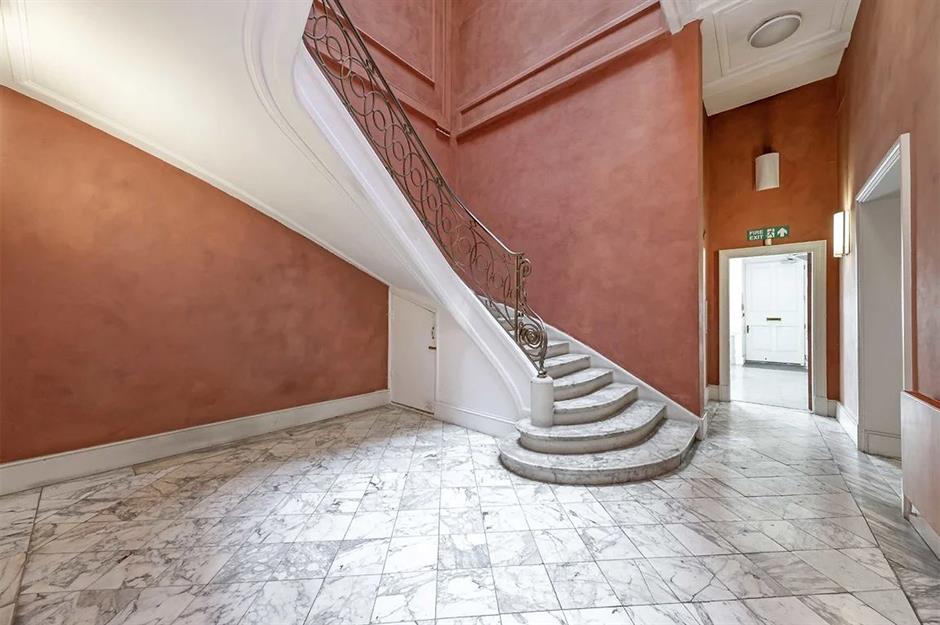
While the building’s prominent and refined façade boasts plenty of kerb appeal, the interior is overflowing with elegant period details.
Arranged over six floors, there are 14,000 square feet (1,300sqm) of accommodation. As soon as you step through the front door, you're greeted by drama – just look at this stunning marble staircase.
18th-century townhouse: dilapidated living spaces

While we don't know the full history of the property, we do know that at some point it was converted from a mansion into an office building.
Sadly, when it was vacated by the company or companies occupying it, the structure was stripped and left to deteriorate.
Holes and signs of damage can be seen in the floors, walls and ceilings, revealing that the building needs major restoration works.
18th-century townhouse: change on the horizon?
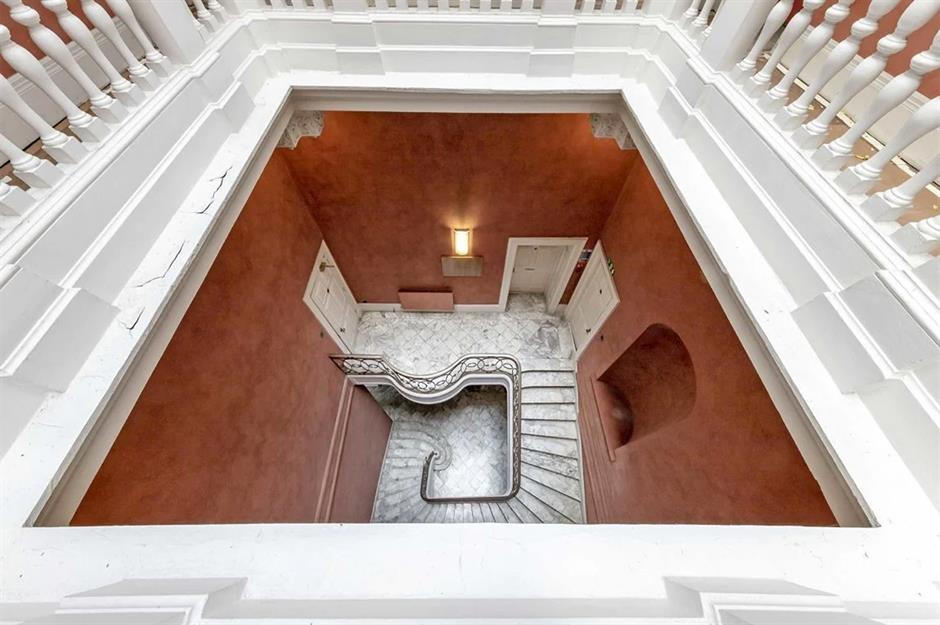
Yet despite its rundown state, every room still showcases preserved original features, such as beautiful crown mouldings, sash windows, fireplaces and light fixtures.
One of the most impressive features of the historic townhouse is its statement roof light, which decorates the very top floor, flooding the stairwell and hallway with light.
18th-century townhouse: change on the horizon?

Elsewhere, many of the upper-floor windows allow for far-reaching views over Green Park.
Listed with Wetherell for a whopping £29,950 million ($40.6m), the impressive property already has planning permission in place to be converted into a luxurious 10-bedroom home, complete with a basement swimming pool and wellness zone, a library, a chauffeur’s office and a movie theatre.
Billionaires' Row, London, UK
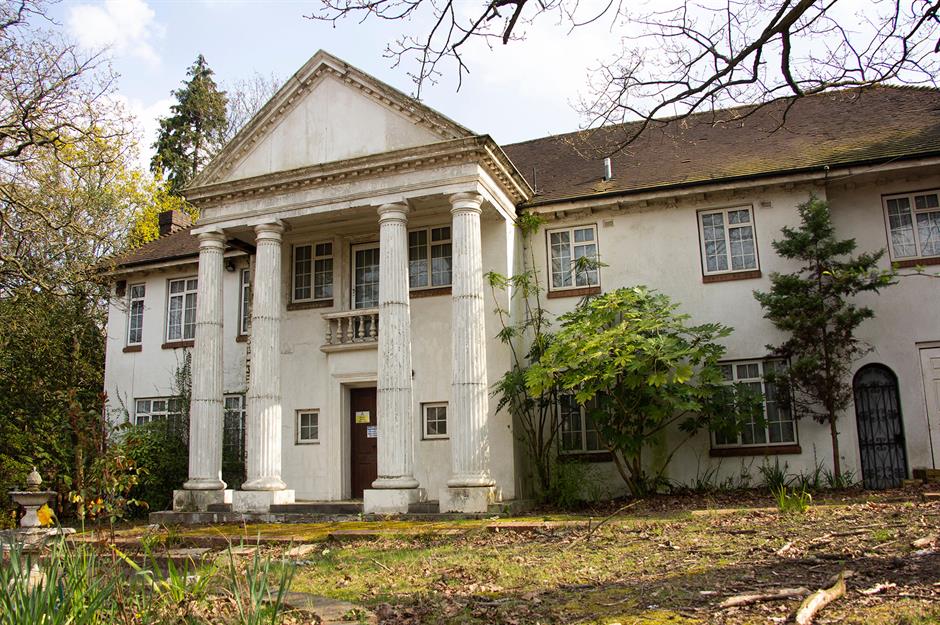
The Bishops Avenue, also known as Billionaires' Row, is one of London's most affluent and controversial streets. The prominent road can be found in Hampstead and around a third of the mansions along it have been left abandoned, with many of them having fallen into ruin.
Owned mostly by foreign investors who leave their homes uninhabited, these luxe properties are now in a sad state of repair.
Billionaires' Row: rows of empty homes
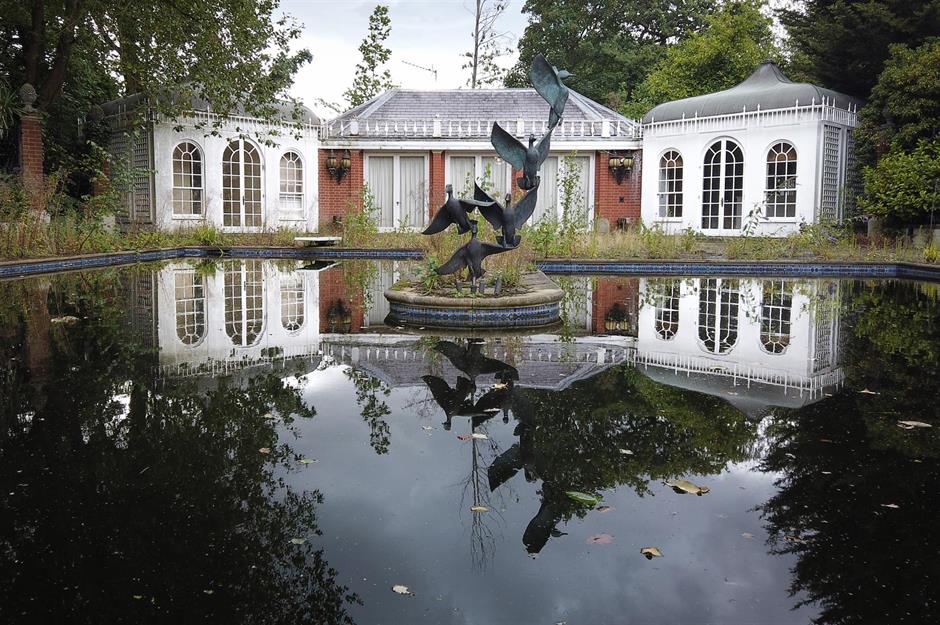
Many of the 66 homes on Billionaires' Row were built in the late 1970s, with more than 10 now standing entirely derelict, despite being some of the most valuable homes in Britain.
In fact, in 2008, Toprak Mansion on The Bishops Avenue claimed a new record as the most expensive home ever sold in the UK at the time. The estate changed hands for £50 million ($68m).
Billionaires' Row: signs of former grandeur
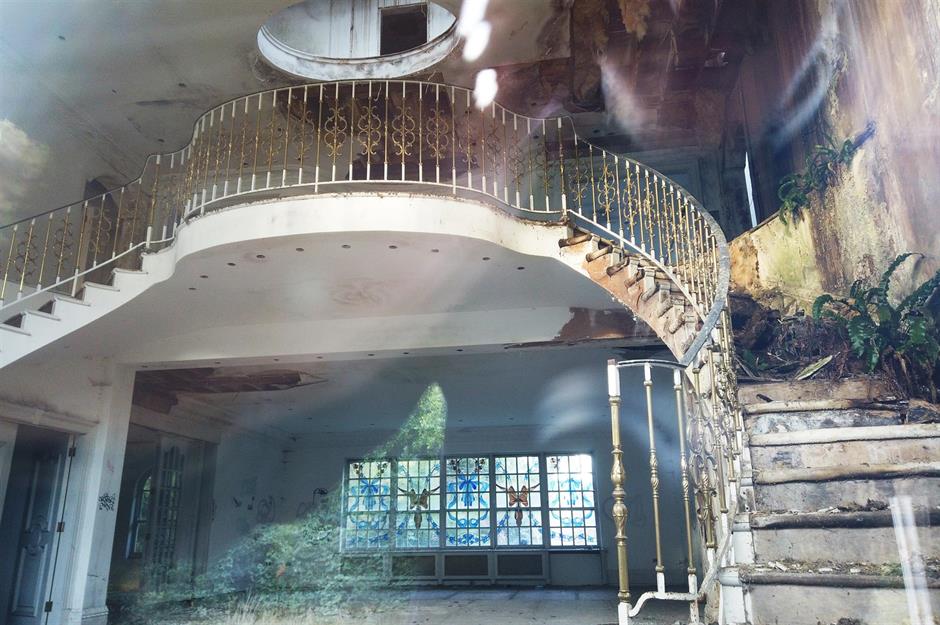
Captured here by explorers Beyond the Point, this empty hallway is falling apart, with a caved-in ceiling that has let in the elements. However, it's easy to see reminders of the home's former grandeur still in place, such as the gold bannister and stained-glass windows within this cavernous hallway.
In 2022, students also explored one of the properties known locally as 'The Towers', sharing their findings on TikTok. The same home was sadly ravaged by fire in the summer of 2023.
Billionaires' Row: untouched for decades
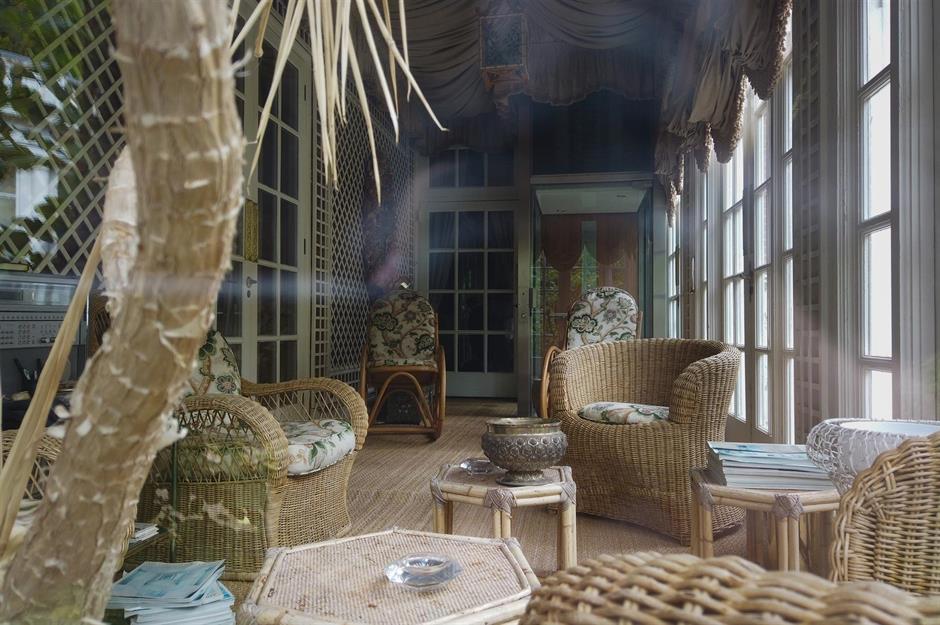
As unbelievable as it may seem, some of the homes have been left untouched for over 30 years. This conservatory looks like the owners have just upped and left, with an ashtray still perched on the rattan table and faded magazines stacked high.
The Bishops Avenue has been dubbed "one of the most expensive wastelands in the world" by developer Anil Varma, who owns a property on this notorious street.
Billionaires' Row: famous past residents
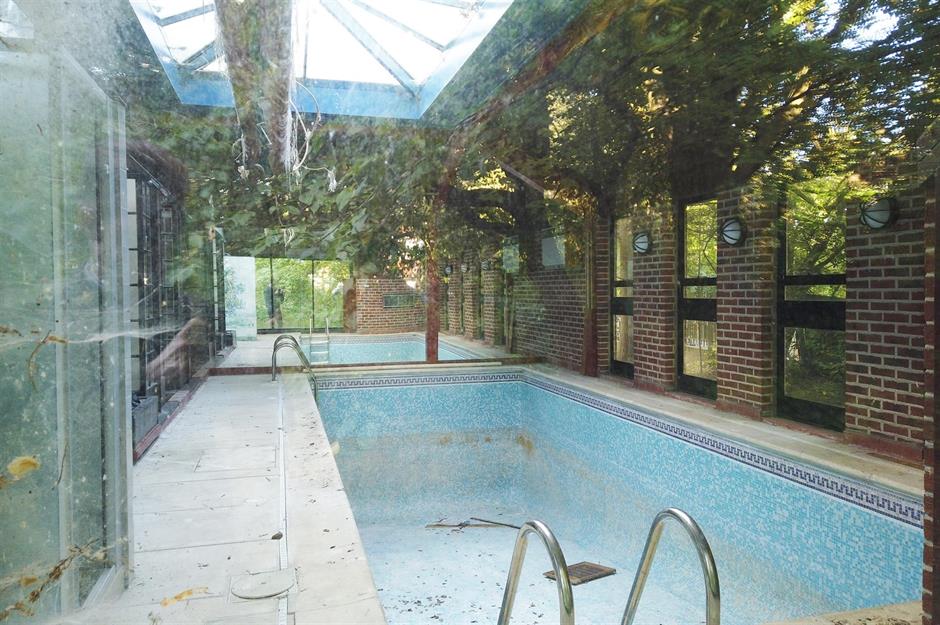
Residents past and present include the super-rich Sultan of Brunei and Justin Bieber, who reportedly rented one of the street's more luxurious homes in 2016 for a whopping £108,000 ($146k) a month.
What was once the ultimate place to live in London has become an entire street of wasteful ruins and decaying buildings, that are said to be collectively worth £350 million ($475m).
Harris Clay mansion, Georgia, USA
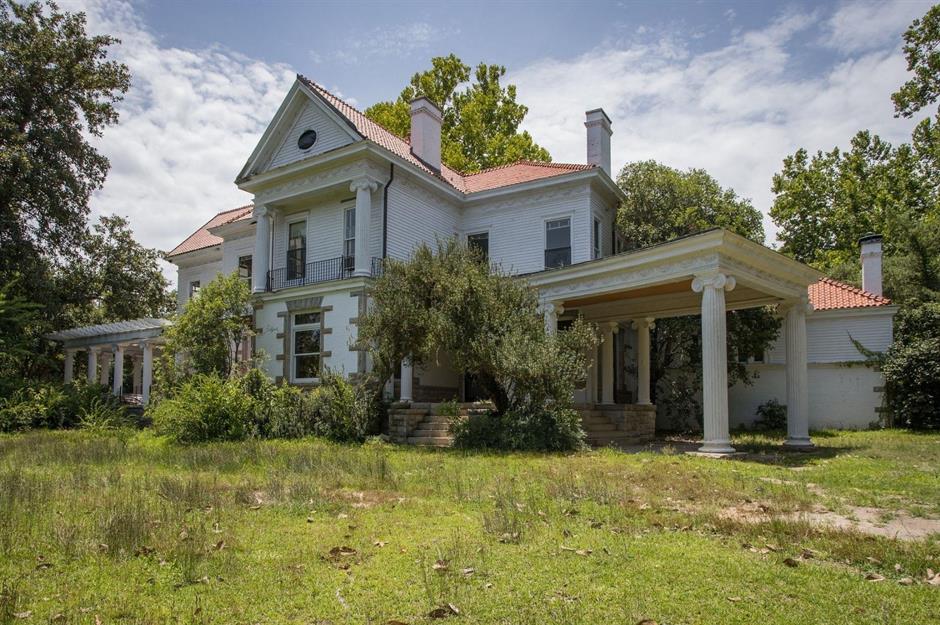
Built in the 1890s, this empty stately mansion in Augusta, Georgia comes with a pretty amazing history. Offering eight bedrooms and six bathrooms, the sprawling home may have faded somewhat since its illustrious heyday when it was at the heart of high-society life, but its prestige is still evident.
Harris Clay mansion: where presidents vacationed
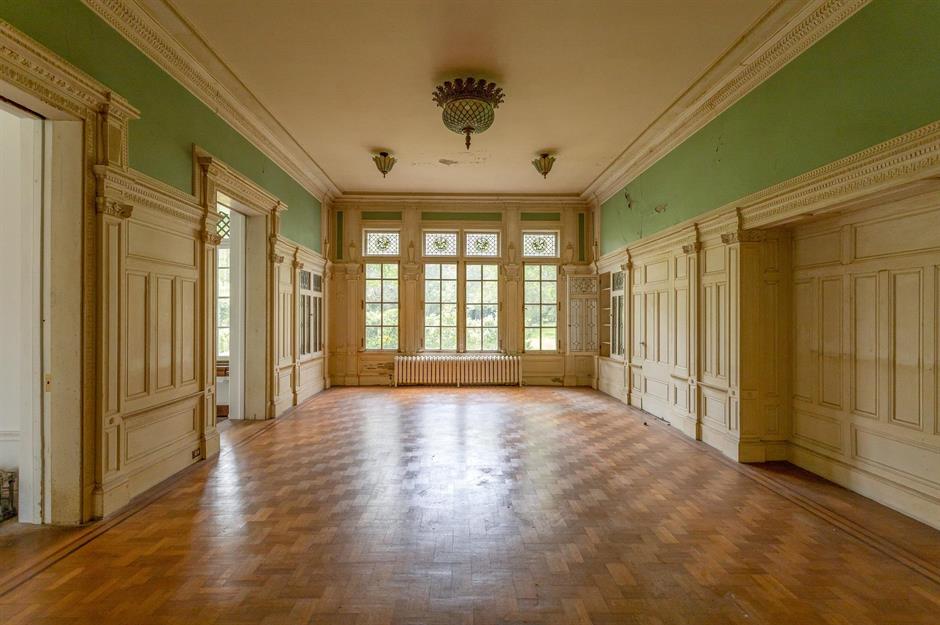
The abandoned American home is said to have regularly hosted the 27th President of the United States, William Howard Taft, in the early 20th century. And even though its floors are now dusty and its woodwork is greying, it's not hard to imagine the mansion's former grandeur.
This reception space is nothing short of spectacular, from the Art Nouveau-style glass light fixtures to the magnificent leaded windows and detailed panelling.
Harris Clay mansion: home of a businessman
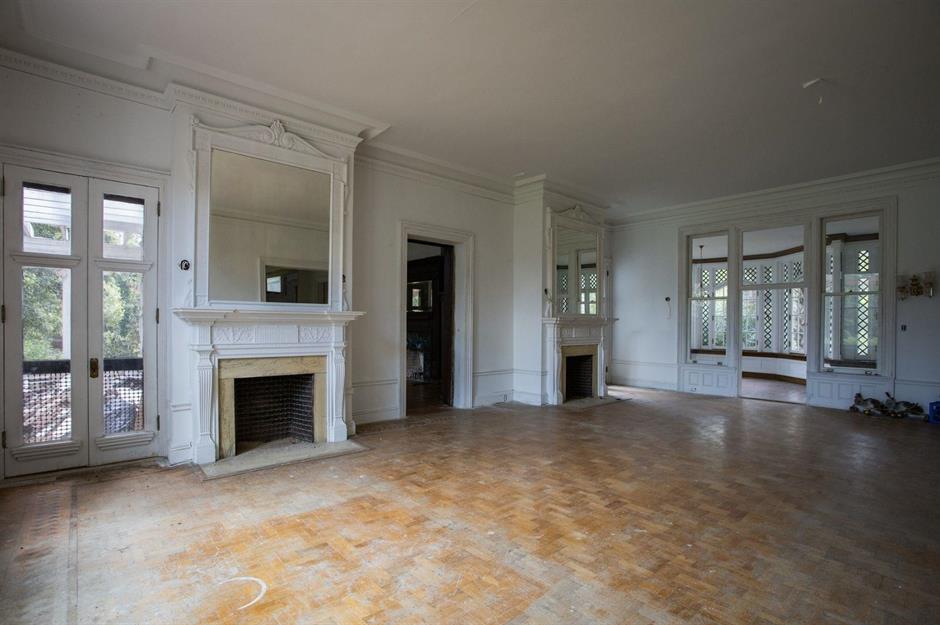
At the heart of the Queen Anne-style house sits this grand reception room, featuring two marble-clad fireplaces and beautiful wood floors.
Commissioned in the late 19th century by businessman Landon Addison Thomas Jr, the property had been in the same family for over a century before it was sold in April 2022 for around £1 million ($1.4m).
Harris Clay mansion: elegant interior fixtures
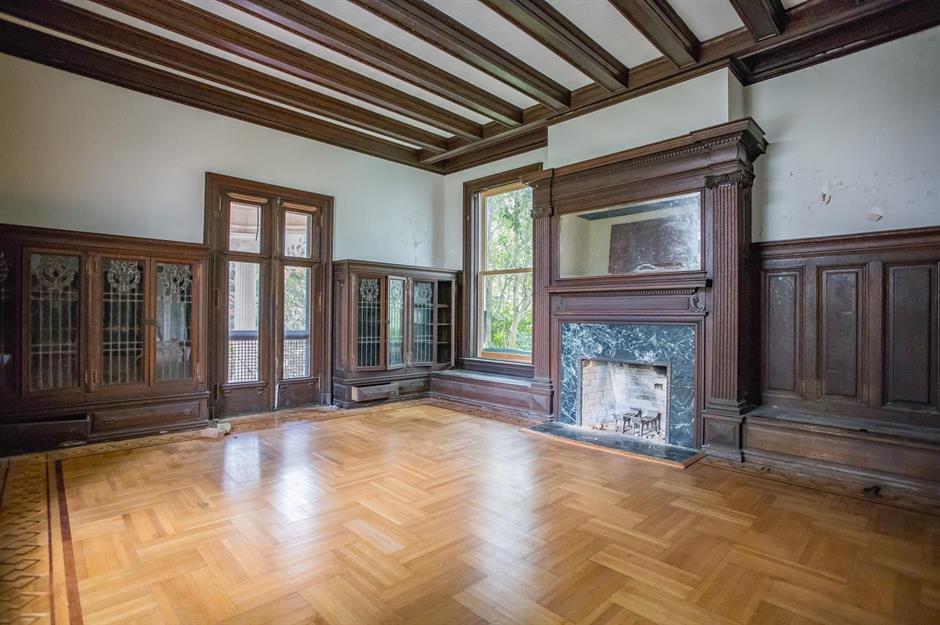
Original hardwood floors extend throughout the interior, and some, like this beautiful parquet flooring, look to remain in extremely good condition. With a treasure trove of stunning period features, it wouldn't take a lot to make the Harris Clay House a beautiful, bustling family home once more.
Harris Clay mansion: million-dollar price tag
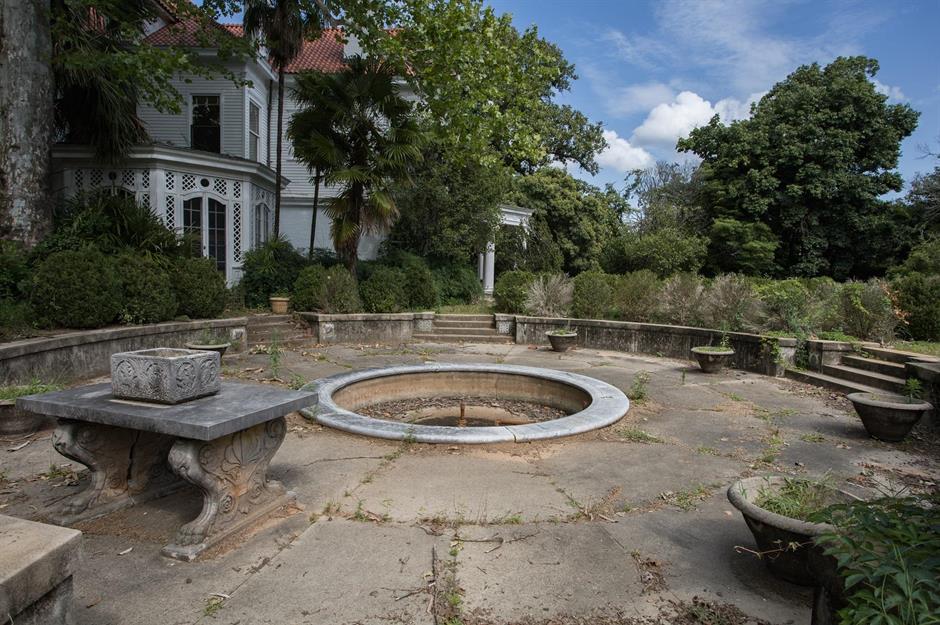
In addition to the striking living spaces, the home is surrounded by over three acres (1.2ha) of land. While somewhat overgrown and time-worn, signs of the once-manicured landscaping are still visible and aren't beyond the point of rescue.
Peeking out from behind the overgrowth, the decades certainly haven't diminished the architectural charm of the Harris Clay mansion. If this grand estate achieved a million-dollar price tag in its current neglected state, who knows how much this empty beauty could be worth once restored?
Swannanoa, Virginia, USA
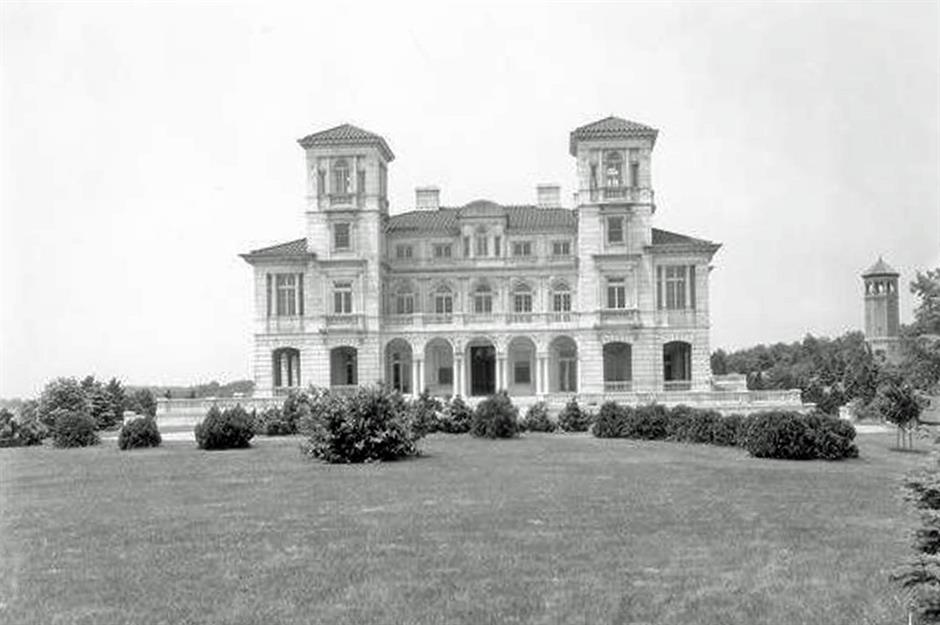
This imposing Italian Renaissance Revival mansion in Virginia was built in 1912 for business leader and philanthropist Major James H Dooley for £1.5 million ($2m) – equivalent to £48.7 million ($66.2m) in 2025.
No expense was spared on the ultra-luxurious property, which took 300 artisans eight years to finish taking them up to the 1920s.
Swannanoa: luxurious furnishings
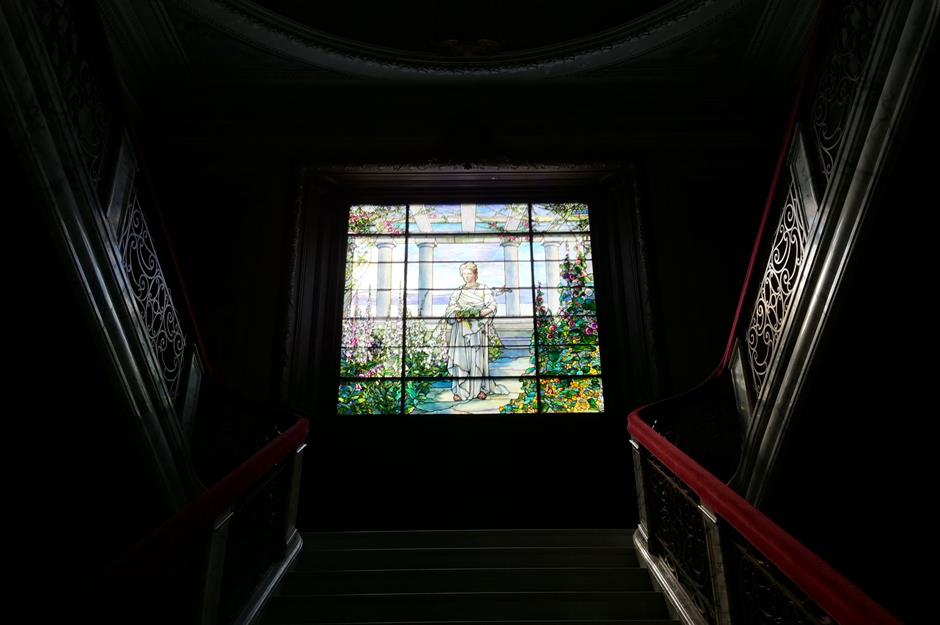
A romantic escape for Major Dooley and his beloved wife Sarah, Swannanoa was kitted out with furnishings worthy of a billionaire, including exquisite Carrara marble flooring and wall panels, along with gold plumbing fixtures.
The home's wow-factor feature is a stunning 4,000-piece Tiffany stained-glass window featuring a depiction of Mrs Dooley.
Swannanoa: state-of-the-art amenities
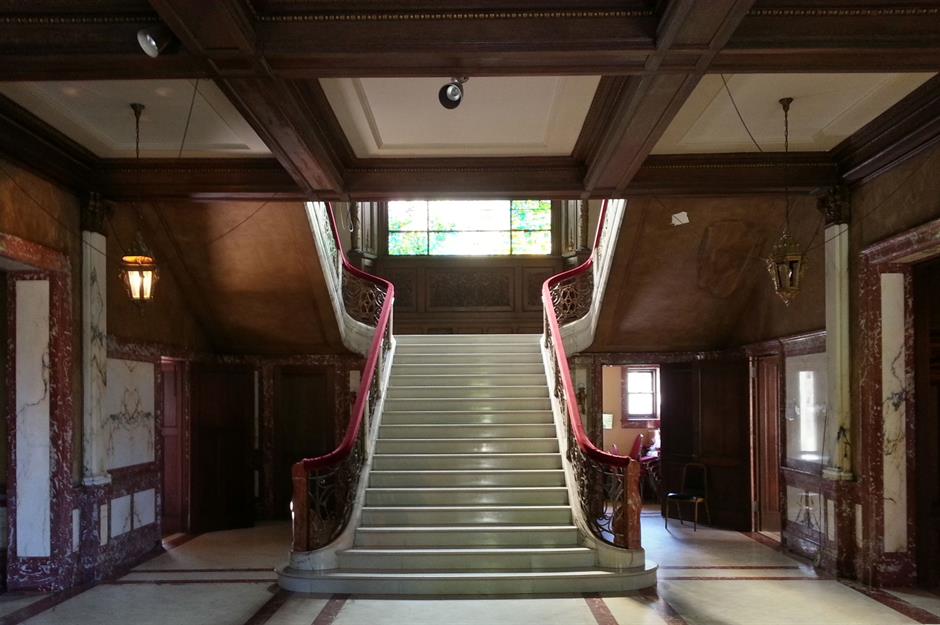
The envy of the neighbourhood, the mansion featured all the latest mod cons. As well as being the first property in the area to have electricity installed, Swannanoa had a cutting-edge elevator and dumb waiter, and upon entering the property, guests were wowed by the panelled entrance hall and splendid marble staircase.
Swannanoa: the many lives of a Virginia icon
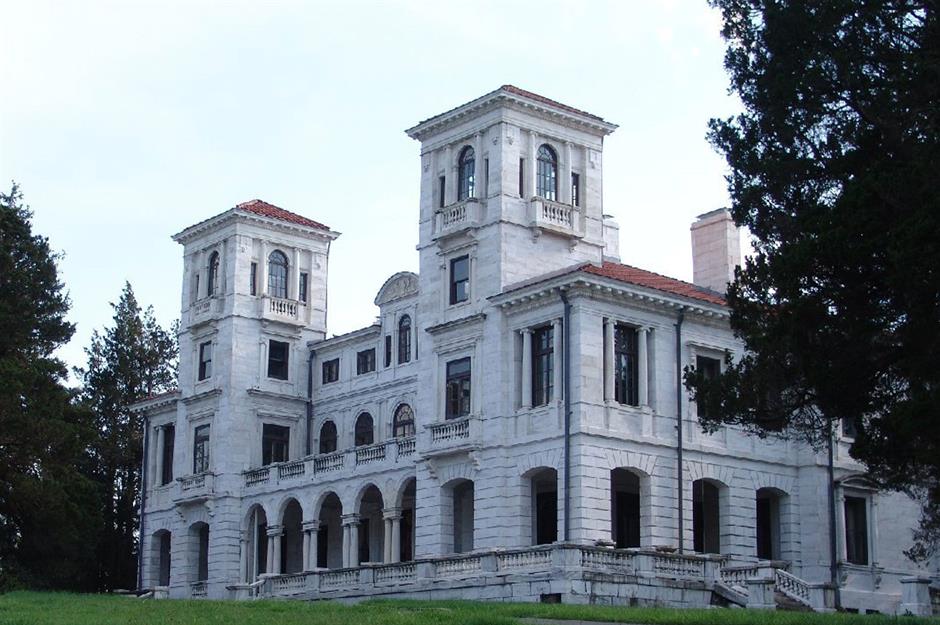
The Dooleys spent their summers at the property until Major Dooley died in 1924. Mrs Dooley died in 1926 and Swannanoa passed to her late husband's two sisters, who didn't waste any time getting rid of it. The mansion was sold for the knockdown price of £220,800 ($300k) – equivalent to £4 million ($5.4m) in 2025.
The residence was later converted into a country club, which opened in 1929 but closed in 1932 on account of the Great Depression. The mansion was then left empty for years. During the Second World War, the US Navy floated plans to purchase the property but was put off by the cost.
Swannanoa: open to the public
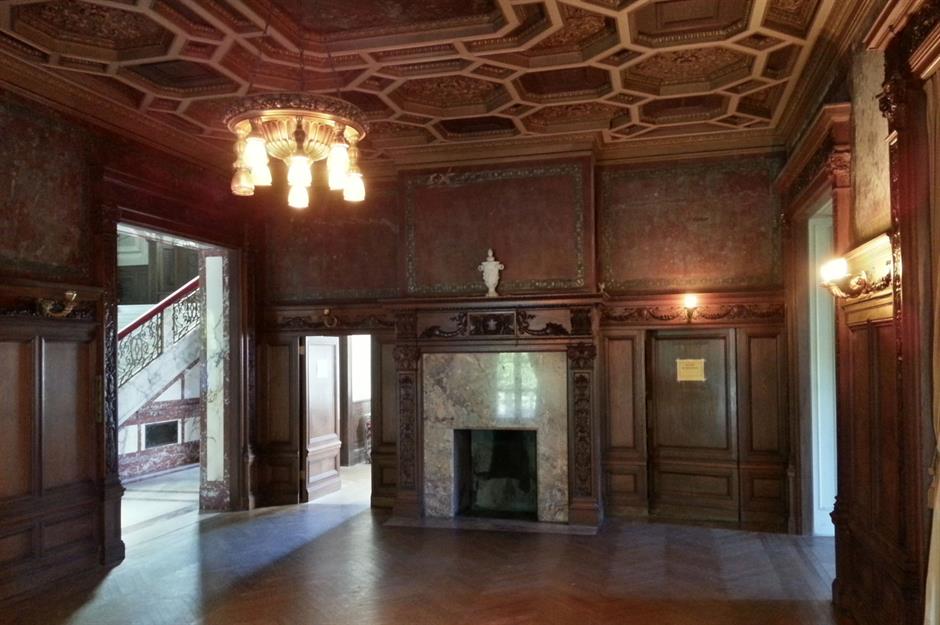
Swannanoa finally found a buyer in 1944 when local businessman A T Dulaney acquired the dilapidated house for £44,100 ($60k) – equivalent to £809,500 ($1.1m) in 2025. He leased it to polymath Walter Russell and his sculptor wife Lao, who established a New Age university on the estate. Russell died in 1963 and his wife continued to lease the property until her death in 1988, when it was repurposed as the Russell Museum.
The Dulaney family, who still own the property, shut the museum in 1998, partly renovating the villa before renting it out for events. It's now open to visitors for special tours in the spring and summer months.
Bamboo Palace, Gbadolite, Democratic Republic of the Congo
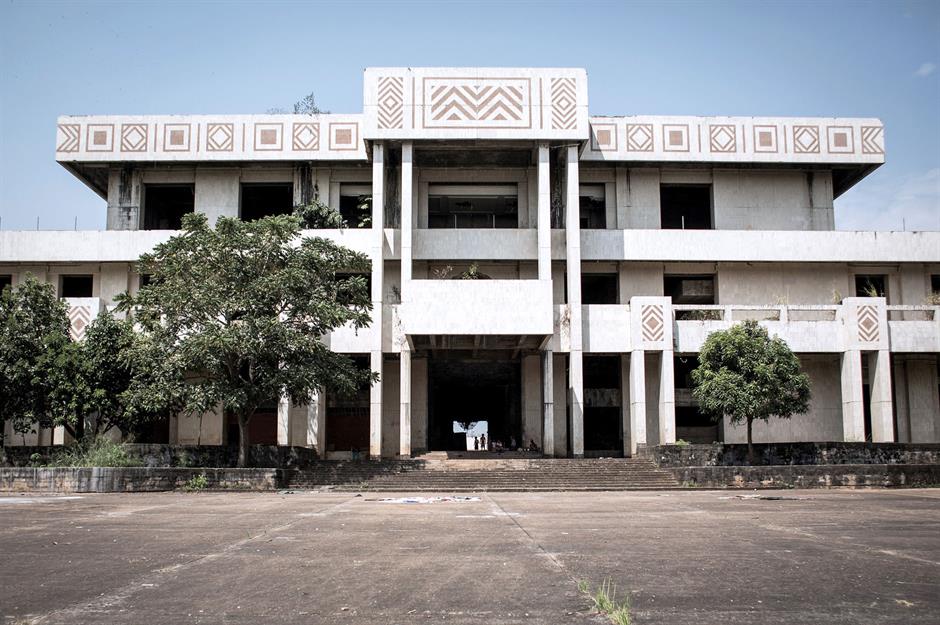
Mobutu Sese Seko, the former president of Zaire, now the Democratic Republic of Congo, was notoriously corrupt. The late dictator reportedly lavished more than £73.6 million ($100m) of his people's money on his 'Versailles of the Jungle', a luxe palace complex that was built in his hometown of Gbadolite during the 1970s.
The complex boasted three sumptuous residences, including the glitzy Bamboo Palace.
Bamboo Palace: run by a staff of 700
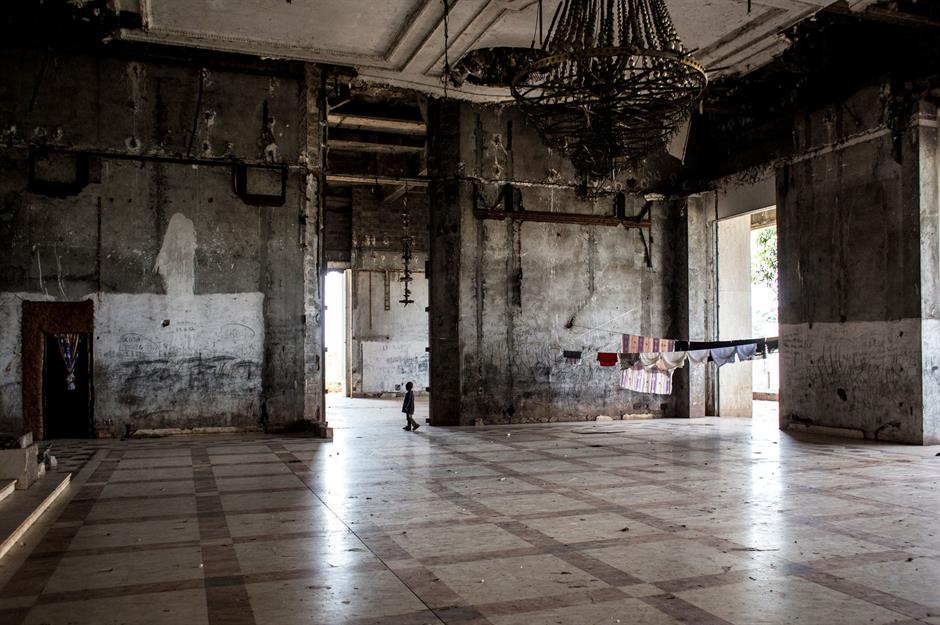
Mobutu packed the interiors with paintings by Monet and Renoir, ornate Louis XVI furnishings, Carrara marble and copious gilding. Ridiculously expensive Murano chandeliers hung in almost every room. The palace in Gbadolite had a staff of 700 to cater to the president and his family's whims, which were legendary.
Bamboo Palace: resort-style amenities
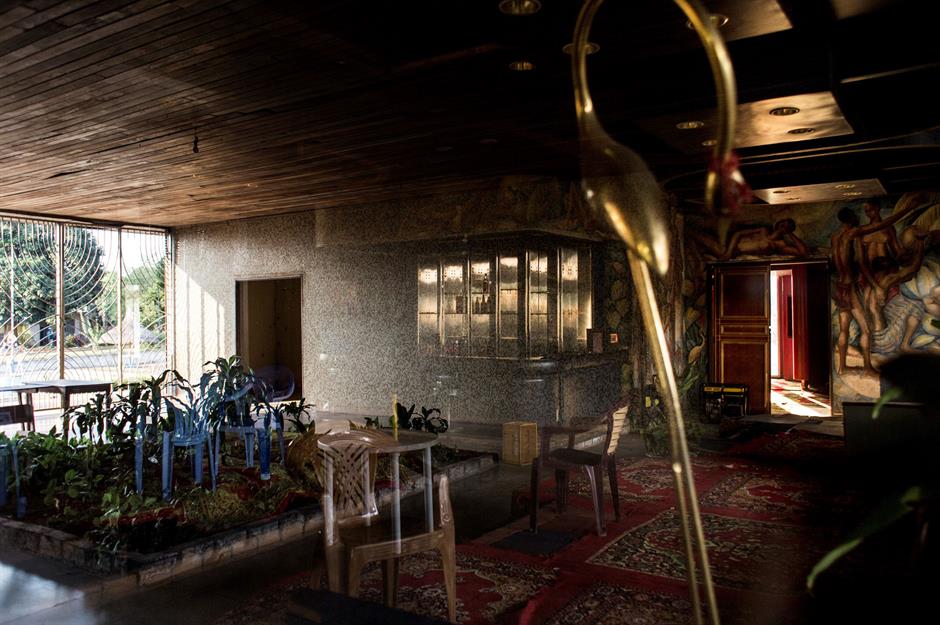
Mobutu even had an international airport built nearby just so he could charter Concorde and fly to Paris together with his aptly named first wife Marie-Antionette for full-on designer shopping sprees.
The Gbadolite complex also had several huge swimming pools, a five-star hotel for visiting dignitaries and a number of plush guesthouses to boot.
Bamboo Palace: copycat architecture
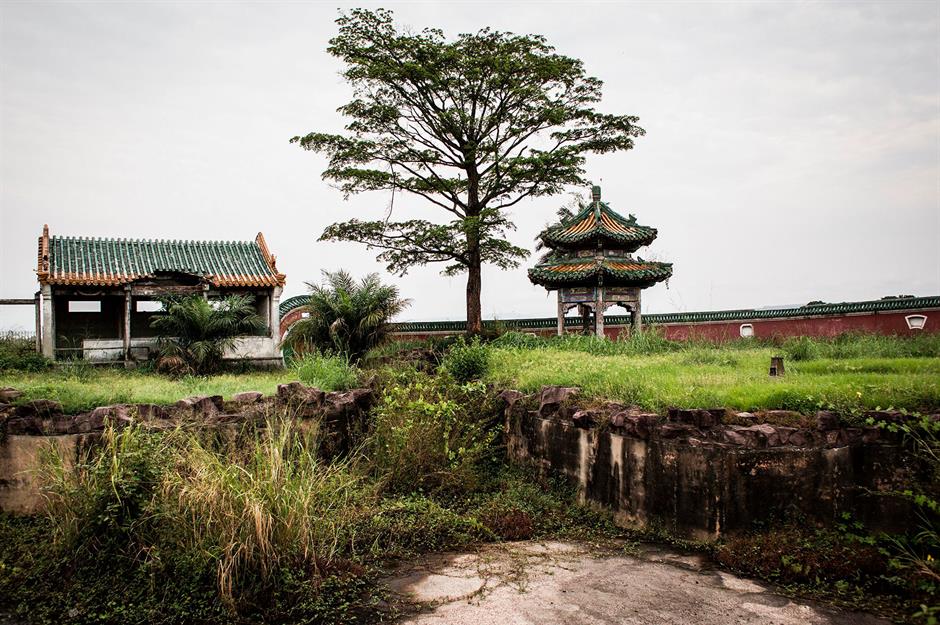
Clearing out the state's coffers, the president even splashed out on a mini replica of Beijing's Forbidden Palace. The so-called Peking Palace was completed in the early 1970s. It was used by Mobutu and his family as a retreat and doubled up as a pavilion for welcoming foreign dignities and other VIPs.
Bamboo Palace: reclaimed by the jungle
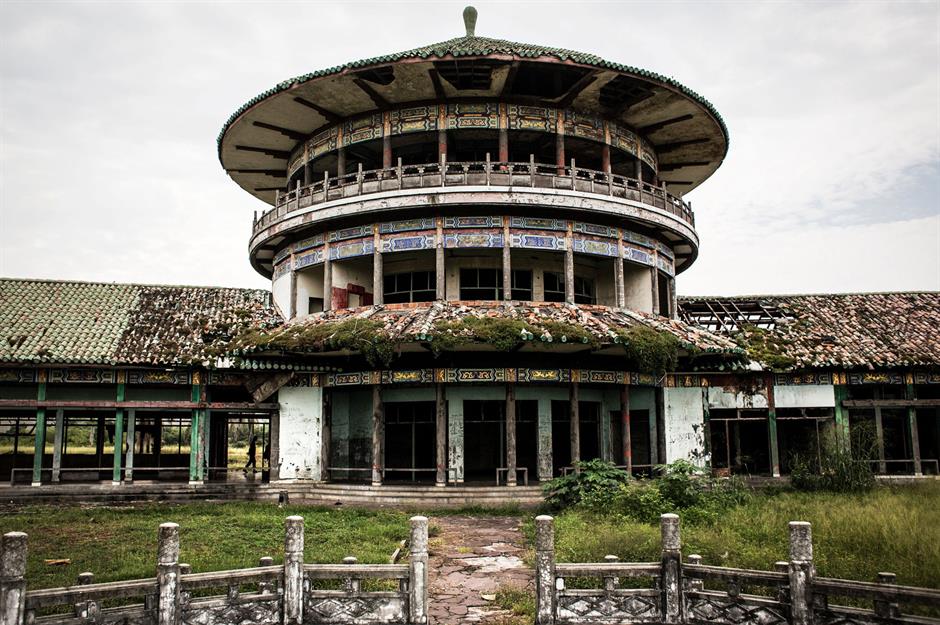
Mobutu was deposed in May 1997, having embezzled an estimated £3.6 billion ($5bn). The ex-president fled to Morocco, where he died later that year. Gbadolite was looted and all its valuables were removed or destroyed. The jungle has since reclaimed the complex, which lies ruined and abandoned.
Hook End Manor, Oxfordshire, UK

Destined to later become the home of Pink Floyd's David Gilmour, this storied Elizabethan mansion in Oxfordshire was built in 1580 for the Bishop of Reading and is thought to have served as a psychiatric asylum during its long history.
Selfridges owner Sir Charles Clore acquired the 11-bedroom manor house during the 1950s and sold it on in 1972 to Alvin Lee, lead singer for the band Ten Years After, who built a recording studio in the barn.
Hook End Manor: home of legendary rock stars
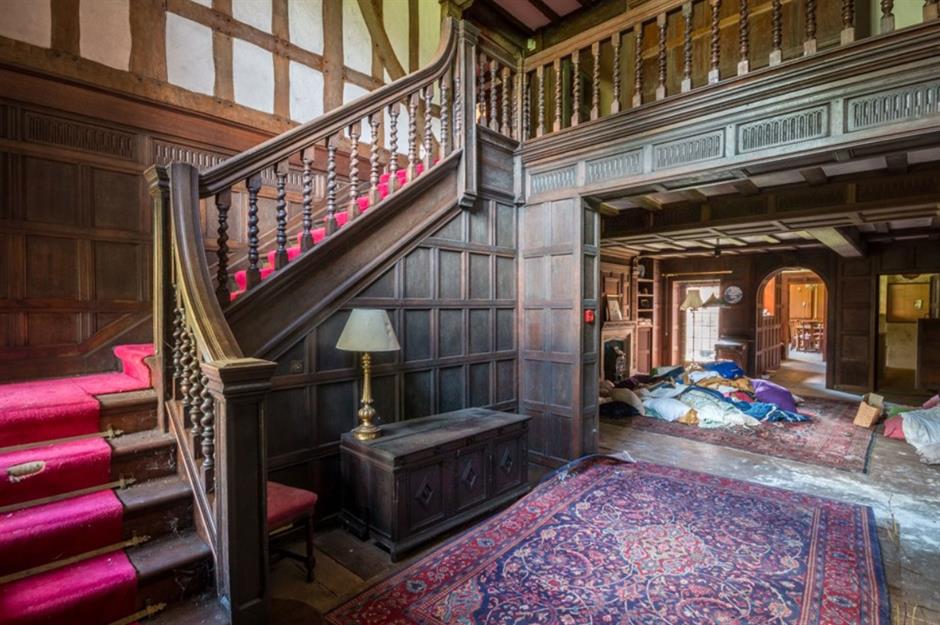
Lee put down several albums at the studio and even used the indoor tennis court as an echo chamber. He let go of the property, which was snapped up by rock star David Gilmour of Pink Floyd in 1980.
The band's giant inflatable pig was stored on the premises and two Pink Floyd LPs were recorded in the studio. Gilmour sold up in 1986 and the manor house and recording studio eventually passed to Frankie Goes to Hollywood producer, Trevor Horn.
Hook End Manor: iconic recording studio
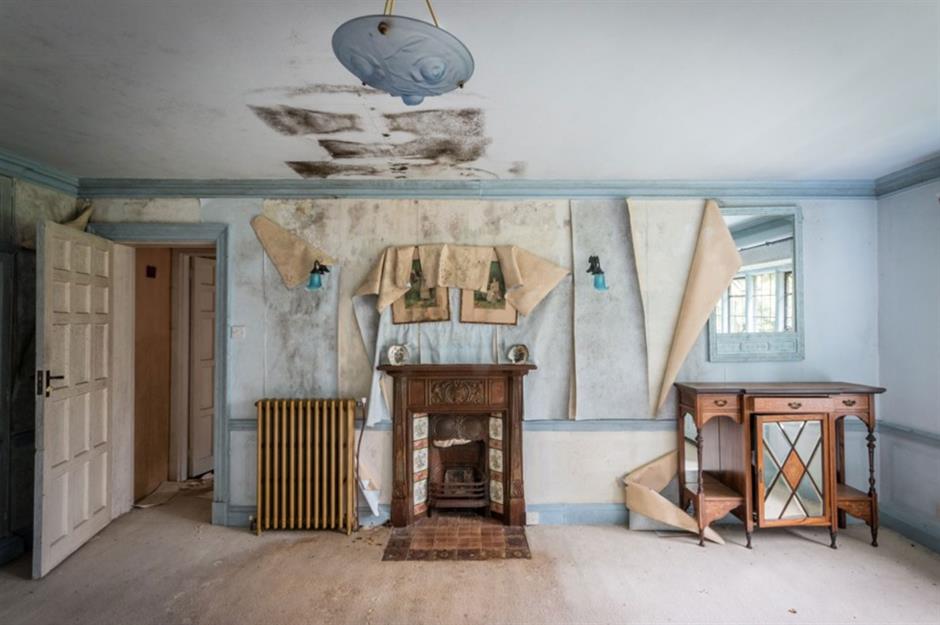
Horn transformed the property into Hookend Productions, which was the UK's most luxurious recording venue from the late 1980s to the 2000s. An impressive line-up of musicians recorded singles and albums there, including Rod Stewart, the Manic Street Preachers, Seal and the Smiths.
Hook End Manor: tragedy strikes
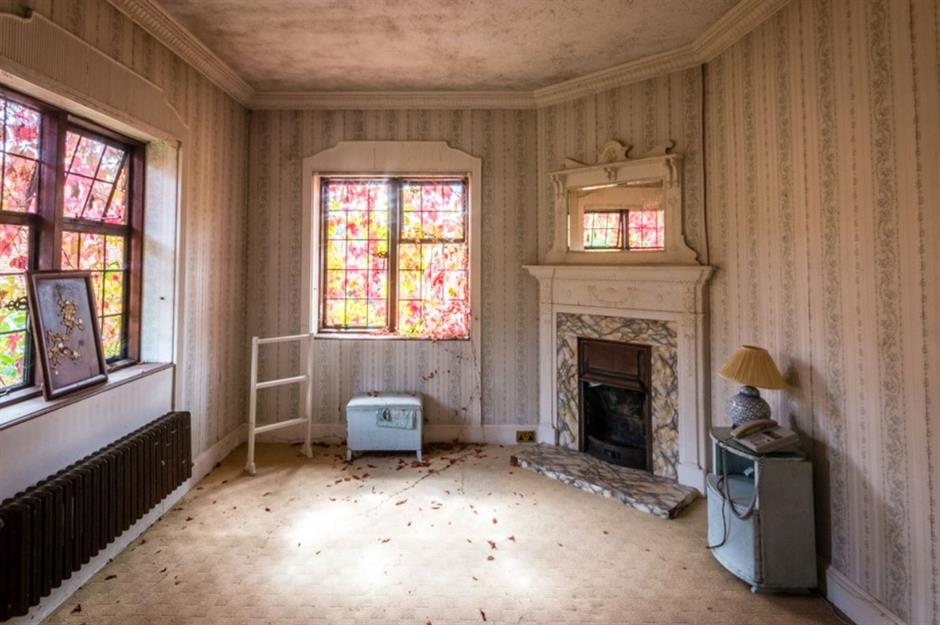
Pictured here, this small but elegantly appointed space on one of the upper floors was likely once a bedroom. A grand fireplace takes centre stage, while mouldings around the ceiling add a sense of grandeur.
While Horn and his family lived happily at the house for some time, tragedy struck. In 2006, an accident at the property forced Horn to sell up and the property was bought by producer Mark White in 2009 for £12 million ($16.3m).
Hook End Manor: brought back from the brink
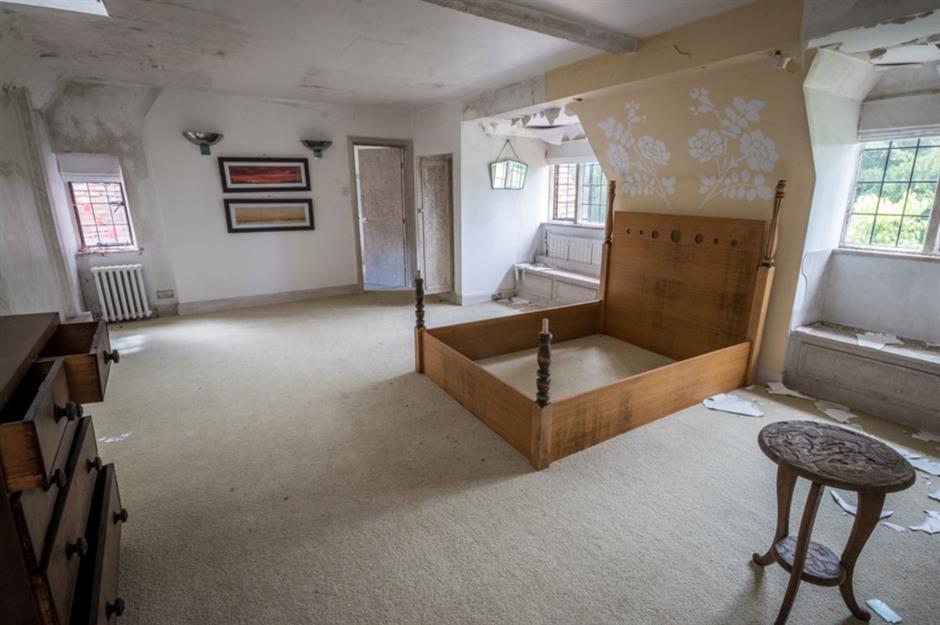
White invested in the studio, but the house lay neglected for years. Photographer Trevor Bishenden captured the dilapidated interiors in 2020 when the manor appeared to be completely abandoned with rising damp and peeling wallpaper.
Fortunately, in more recent years the house has undergone renovation and has been brought back from the brink, with its historic architecture restored for future generations to enjoy. The property now offers luxurious accommodation for visiting musicians recording at the property's state-of-the-art recording studio.
Château Miranda, Wallonia, Belgium
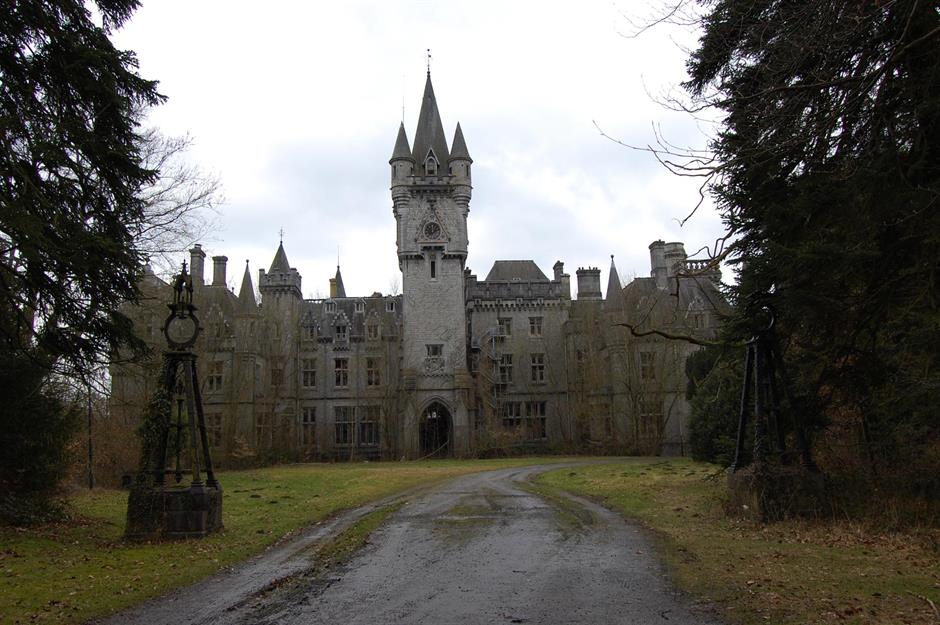
With its neo-Gothic turrets peering over the trees of its woodland setting, Château Miranda, or Château de Noisy as it was also known, was once the stuff of fairytales.
Count Liedekerke-Beaufort commissioned English architect Edward Milner to create a fanciful summer residence for his family near Celles, Belgium, close to his principal residence, Castle Vêve. Construction started in 1866 and was completed in 1907 when the ornate clock tower was erected.
Château Miranda: a storied history
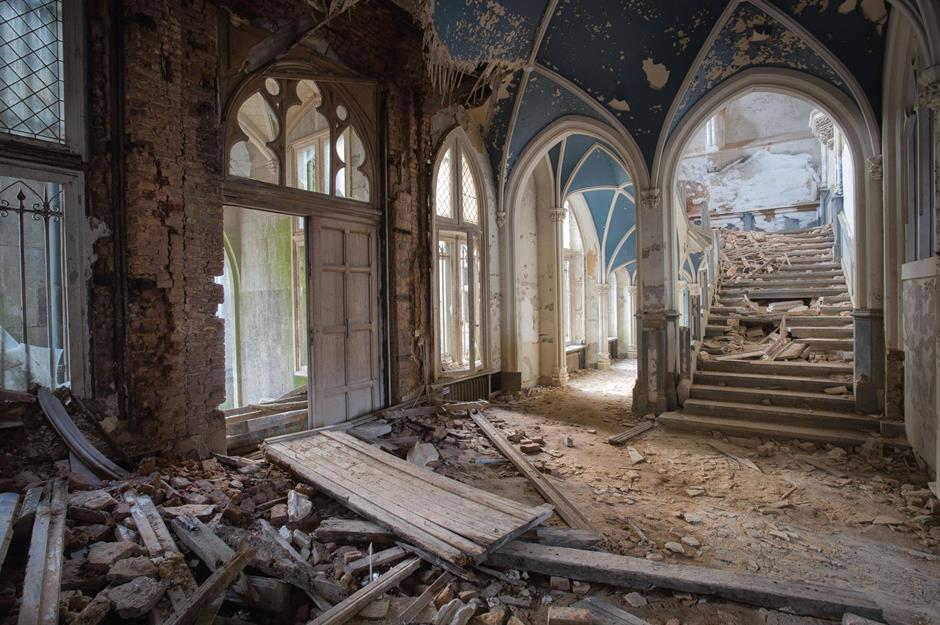
Once the scene of lavish parties, its majestic arched hallways and painted ballrooms were reduced to rubble in 2017 following decades of neglect.
The aristocratic Liedekerke-Beaufort family lived in the castle until the Second World War, witnessing first-hand the Battle of the Bulge. The mansion was later occupied by the Nazis for a time. Devastated by war and deterioration, its elegant structure was taken over by the National Railway Company of Belgium in 1950 and renamed Castle Noisy.
Château Miranda: ravaged by fire
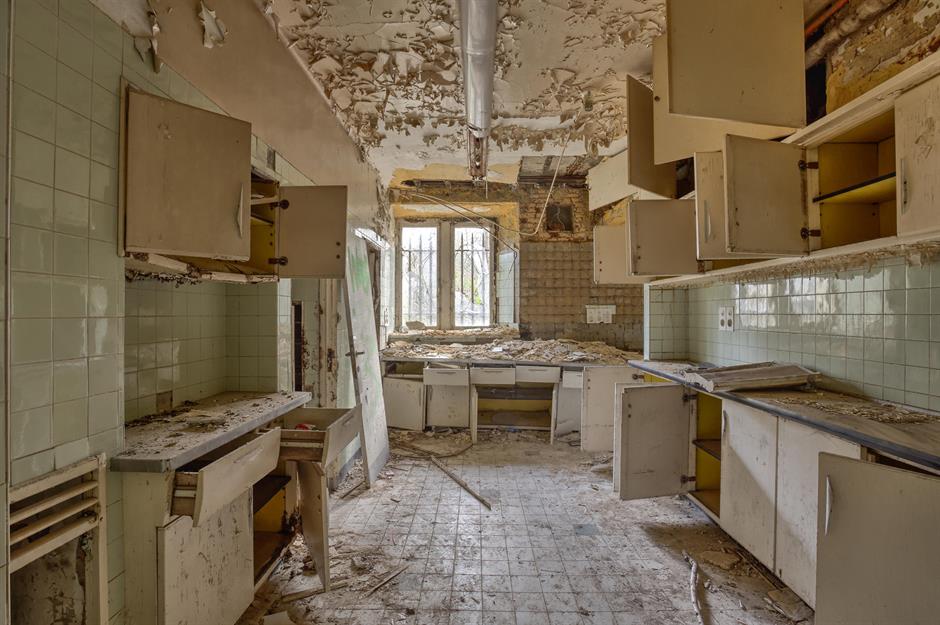
It was used as an orphanage and a holiday camp for the children of the railway’s employees, who later reported mistreatment and cruelty at the hands of the staff. The orphanage closed in the 1970s due to soaring costs. A crumbling retro kitchen from the 1950s was all that remained of its time as a holiday camp.
In the years that followed, the castle deteriorated further until a fire in 1995 destroyed an entire wing. Repair and renovation costs were deemed too excessive, and a lack of investment brought further decay and dilapidation.
Château Miranda: frequented by urban explorers
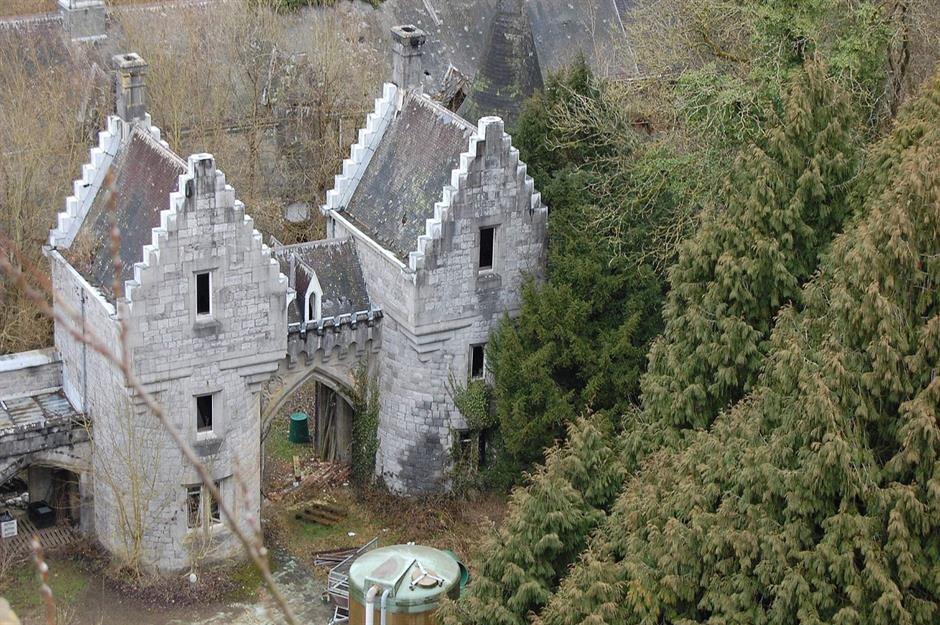
Reduced to little more than a ruin, save for this gatehouse, the site became a magnet for 'urban explorers', photographers and ghost-hunters, who were drawn to the eerie beauty of the derelict castle.
Later in 2014, another fire sounded the death knell for the castle, when further damage made the site unsafe and beyond rescue. The family had already removed fireplaces, tiles and other objects of value by the time the demolition started in October 2016.
Château Miranda: razed to the ground
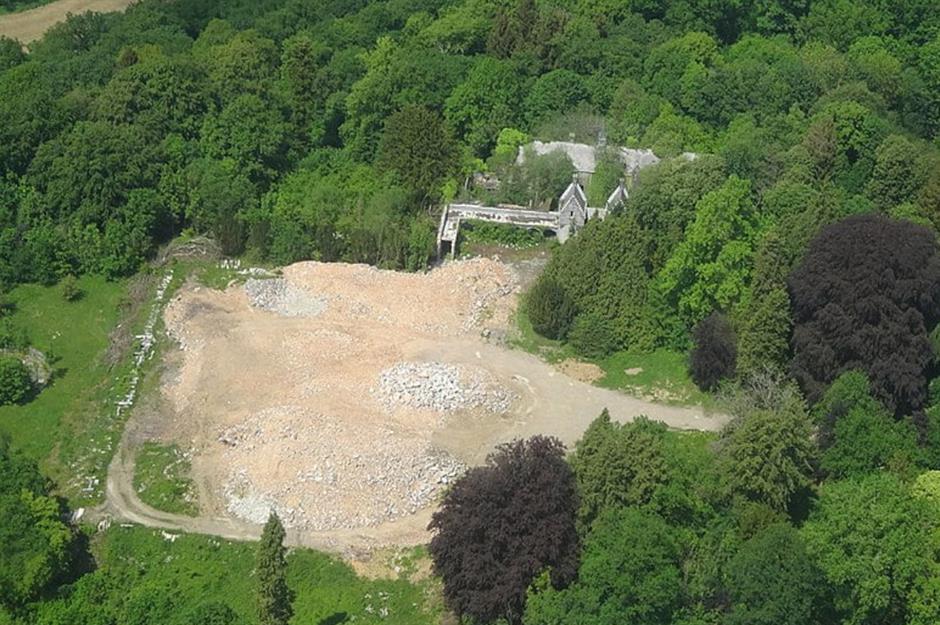
The demolition process took nearly a year, with the neo-Gothic turrets removed first. The final part to be levelled was the castle's iconic clock tower, which, rumour has it, worked perfectly until the end of the 20th century, despite never having been serviced.
Preserved in photographs and captured in several film productions, including the series Hannibal, Castle Miranda is gone but not forgotten.
Loved this? Take a tour of more incredible abandoned homes
Comments
Be the first to comment
Do you want to comment on this article? You need to be signed in for this feature